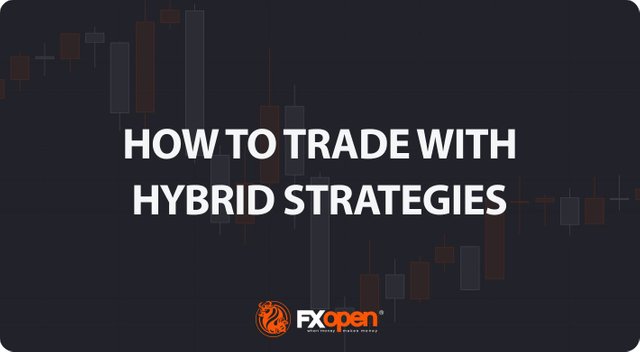
In today's intricate financial landscape, traders have an array of strategies at their disposal. This article delves into the core methods—technical, fundamental, and algorithmic/quantitative analysis—and introduces the concept of hybrid strategies. Learn how combining these techniques can offer a balanced approach to trading, enhancing decision-making and risk mitigation.
Creating Hybrid Trading Strategies
In the world of trading, there are primarily two schools of thought: fundamental analysis (FA) and technical analysis (TA). Fundamental analysis delves deep into economic indicators such as GDP, inflation rates, and earnings reports, aiming to assess an asset's intrinsic value.
On the other hand, technical analysis focuses on studying past price movements and trading volumes, often through charts, to predict future activity. You can find all the charts and tools necessary for technical trading strategies over in FXOpen’s free TickTrader platform.
While both approaches have their merits, a growing number of traders are blending these methodologies to create what are known as hybrid strategies.
Creating a hybrid strategy involves integrating the predictive elements of both FA and TA. For example, a trader might consider an asset's economic indicators to gauge its inherent value and then use technical tools like Moving Averages or Bollinger Bands to time their entries or exits. The aim is to capitalise on the strengths of each approach while mitigating their individual weaknesses.
Beyond traditional financial markets, the principles of hybrid strategies have been used for cryptocurrencies. Given the highly volatile and dynamic nature of crypto assets, a well-crafted crypto* trading strategy often incorporates both fundamental and technical elements.
While fundamental analysis in crypto* trading might involve studying the utility and adoption rates of a specific digital asset, technical analysis frequently employs chart patterns and indicators to gauge market sentiment. Combining the two in crypto* trading methods can offer a more comprehensive understanding of market conditions, allowing traders to better position themselves for potential opportunities while managing risks effectively.
Strategy 1: Overbought/Oversold after News Release
The overbought/oversold after news release strategy capitalises on short-term market fluctuations that occur as a reaction to major economic announcements, using the Relative Strength Index (RSI) to determine whether the price is overbought or oversold. This approach is particularly effective on lower timeframe charts, where quick reversals are more pronounced.
Full article read at https://bit.ly/3QdNPi5